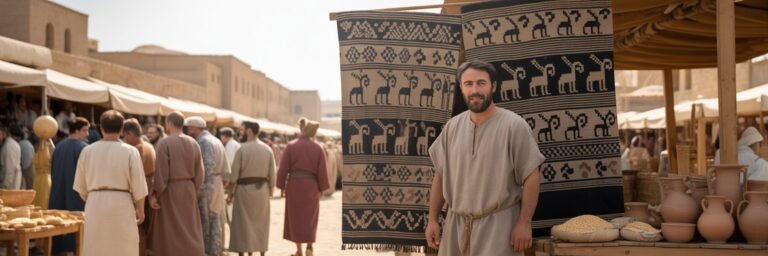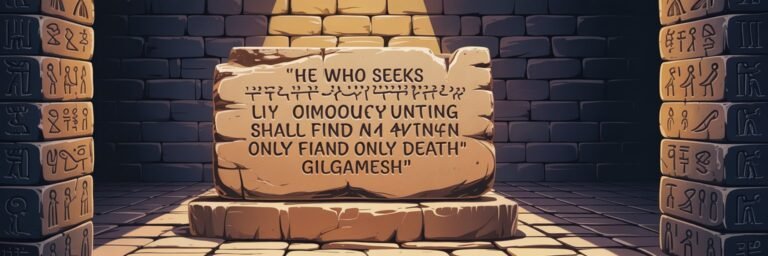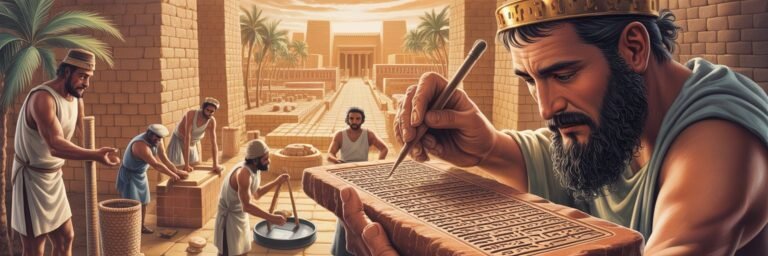INTRODUCTION
Ancient Mesopotamia plays host to a pantheon of heroes and villains – iconic figures representing the best and worst of humanity, rendered in the cradle of civilization. Here, in the fertile crescent formed by the Tigris and Euphrates rivers, our ancestors spawned the first written laws, invented the wheel and started the first cities. The narrative of heroes and villains conceived in this expanse remains fundamental to our understanding of civilization itself.
HISTORICAL BACKGROUND
Home to the Sumerians, Akkadians, Babylonians, Assyrians, and Persians, Mesopotamia’s societal canvas was richly painted with dynamic cultures and varied dynasties. The first of these, the Sumerians, emerged around 4500 BCE. Their greatest hero was Gilgamesh, a demigod king whose adventures were recorded in the world’s earliest piece of epic literature. He was famed for his unending quest for immortality, an endeavor that led him to confront gods, wrestle mythological beasts and plumb the depths of atavistic wisdom.
Conversely, the rule of the Akkadian Sargon of Akkad, which started in 2334 BCE, was marked by a pioneering villain. Infamous for militaristic expansion, Sargon imposed his will through a centralized administration, revealing the villainy of unchecked power.
THEORIES AND INTERPRETATIONS
The tale of Gilgamesh was initially relegated to semi-mythical status, until archaeological expeditions in the 1800s unearthed clay tablets with cuneiform script, revealing the Epic of Gilgamesh. Scholars like R. Campbell Thompson and George Smith translated the tablets, placing Gilgamesh within discernible history. Some theories propose that Gilgamesh’s story reflects the Sumerian understanding of mortality and the hero’s struggle against it.
On the other hand, Sargon of Akkad’s story has been the subject of intense historical scrutiny. Early theories characterizing him as a ruthless conqueror have given way to nuanced interpretations. Archaeologist Charles Maisels places Sargon within the larger framework of early state formation, suggesting that his tyranny was a necessary evil in the nascent concept of a geographically spread empire.
MYSTERIES AND CONTROVERSIES
The lingering mysteries surrounding these Mesopotamian figures continue to fuel academic curiosity. Gilgamesh’s quest for eternal life, for instance, is examined by scholars like Tigay, Spielvogel, and others as a reflection of mankind’s timeless struggle with mortality. His encounter with Utnapishtim, the Noah-like figure who survived the Great Flood, echoes in other flood narratives around the world, creating a controversy over the potential shared roots of these diverse mythologies.
Sargon’s reign also presents mysteries, not least of which is the actual origins of this charismatic yet ruthless leader. The narrative of a meager birth and the subsequent rise to power has evoked comparisons with Romulus and Remus’s story and Moses’s Biblical journey, sparking debates on the diffusion of such power-ascending narratives.
SYMBOLISM AND CULTURAL SIGNIFICANCE
Historically, Gilgamesh and Sargon were living embodiments of their societies’ values and fears. Gilgamesh’s insatiable thirst for knowledge and immortality mirrored the Sumerian society’s drive for advancement and understanding of their existence. His journey symbolized the human struggle with mortality and serenity in accepting inevitability.
Sargon, conversely, symbolized the centralization of power and the dangers it posed. He was both a magnetic leader and a feared despot, embodying the complex dynamics of absolute power. His story conveys the age-old debate on whether ends justify means – a question as pertinent today as it was in antiquity.
MODERN INVESTIGATIONS
Present-day research into these figures continues to unearth new layers of understanding. Advances in archeological techniques have revealed more about the reality of these figures. Gilgamesh’s city of Uruk, for instance, has been rediscovered and excavated, providing tangible proof of Sumerian advancement. Modern linguistic analyses also continue to refine our understanding of the Epic of Gilgamesh, revealing subtleties within the ancient stories.
Sargon’s reign, too, is the subject of ongoing research. New theories question whether his empire was hugely militaristic or if that aspect has been amplified by generations of chroniclers. New archaeological findings have begun to paint a more balanced portrait of Sargon’s rule, showing elements of diplomacy and international trade.
LEGACY AND CONCLUSION
The legacies these figures left behind are interwoven tightly with human civilization. Gilgamesh’s tale of friendship, ambition, loss, and acceptance resonates across cultures and ages. His relentless search for the secret of eternity, despite the gods’ opposition, stands as a testament to mankind’s undying spirit.
Sargon, for all his militaristic villainy, paved the way for future empires. Strategies of centralized governance put into practice during his reign became future blueprints for structured ruling. His rule reflected the double-edged facets of power, an immortal tragedy that continues to echo in our world.
In the wide tapestry of history that is Ancient Mesopotamia, the dynamic coupling of heroes and villains such as Gilgamesh and Sargon transcends eons. Their narratives serve as a mirror to our world, a reminder of the timeless struggle of humankind for power, knowledge, and overcoming mortality. From what we unearth and learn, we gain deeper insight into the human journey, making the exploration of ancient Mesopotamia a timeless and necessary pursuit.






